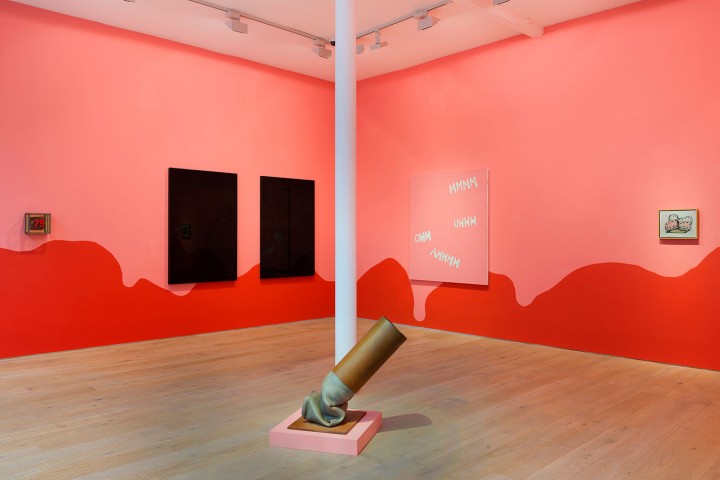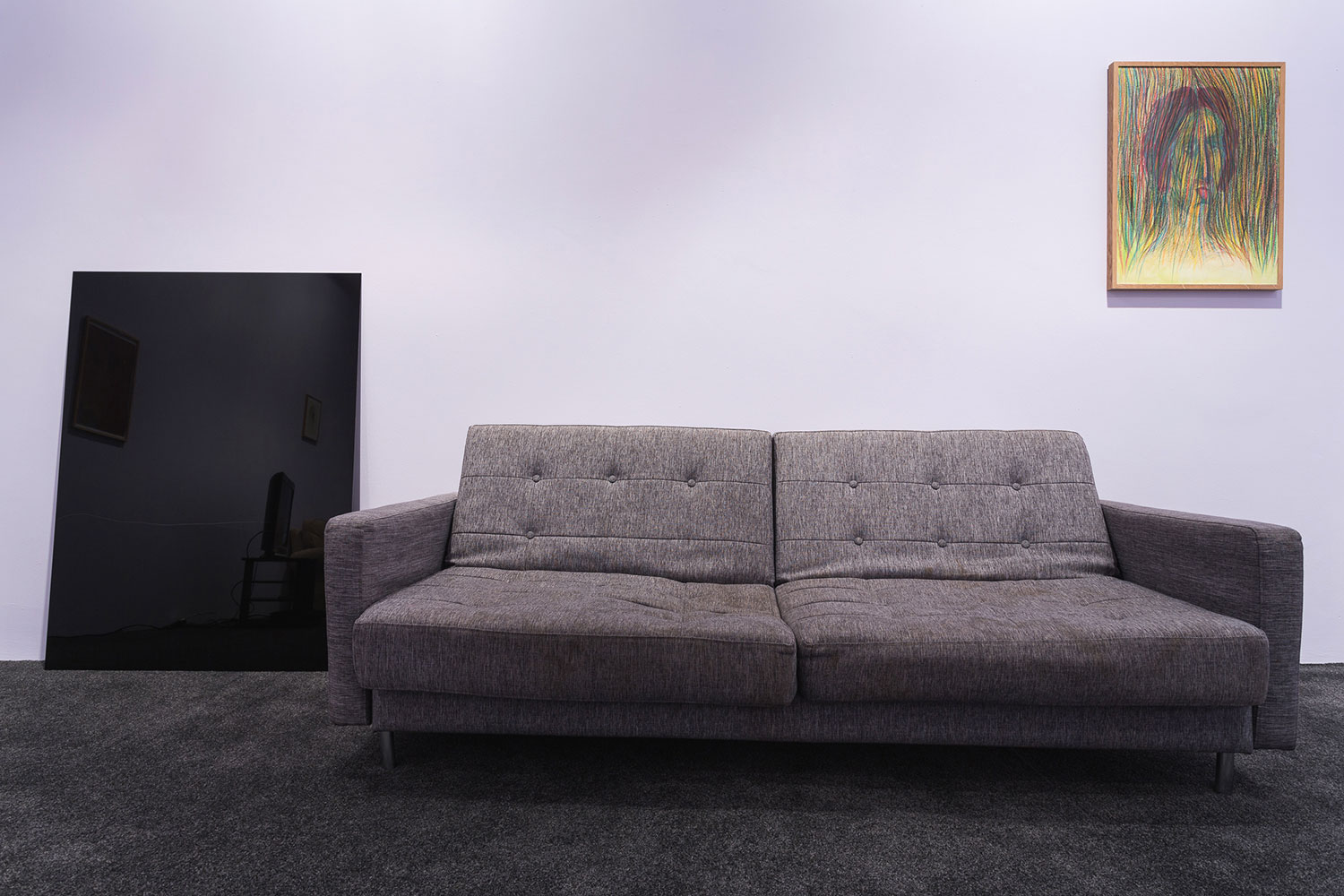Displayed across Pace Gallery’s London space and featuring an extended selection of works by both established and emerging artists, “Everything Falls Faster than an Anvil” explores the influence of cartoons aesthetics on contemporary art.
The title, taken from O’Donnell’s “Laws of Cartoon Motion,” describes how in “cartoon physics” a falling anvil will always land directly upon a character’s head, regardless of the time gap between the body and the anvil’s respective drop. Using this inversion of physical perspective as a starting point, Chewday’s curates a delightful exhibition, selecting a disparate array of works spanning nearly half a century.
Two of the exhibition’s featured artists, Paul Thek and Claes Oldenburg, were also included in “Beyond Realism,” a 1965 exhibition at Pace Gallery, New York, which explored the role of everyday objects in the irrational and unconscious parts of our understanding.
An impressive pink and magenta site-specific mural by artist Carl Ostendarp, Fruit and Icebergs (2014), encloses the gallery space, providing a visionary context for the works on display.
The exhibition uses direct comic references as a formal vehicle to mislead the viewer while suggesting critical social themes. MMMM UHHH OHH AHHH (2011), also by Ostendarp, is a large canvas chanting ubiquitous onomatopoeia words to a confused public; John Wesley’s painting Untitled (2011–12) displays clashing adult content in a playful graphic layout; Oliver Osborne’s The Call (Leytonstone) (2014) features silkscreened characters appropriated from European language textbooks; and Torbjørn Rødland’s “Andy Capp Variations” (2009) presents different portraits of the British comic strip character with his signature cap tipped down and cigarette dangling from his lips.
Drinking and smoking are recurring topics, hyperbolically enacted through Alistair Frost’s Now watch how I lift my tray table into its original and upright position (2014); Marlie Mul’s Cigarette Ends Here (Smoking Men) (2012); Yoan Mudry’s Transitional Monologue (2014); and Peter Wächtler’s Untitled (2013), an organ pipe sculpture that resembles an unhappy cartoon face. Throughout the exhibition, cartoons lose their naive sense of reality and address larger, darker social issues.
A giant cigarette butt, Fagend Study – Half Scale (1973–75) by artist Claes Oldenburg, confuses scale parameters. Meanwhile two girls are depicted fighting in Ella Kruglyanskaya’s colorful The Scribbler (2013), perpetuating the feeling of uneasiness that emanates from all these vivacious works.
Exploring popular representational codes typically associated with imagination, lightness and playfulness, the exhibition’s sharp inversions and juxtapositions offer a remarkably vivid reflection on our social environment.


